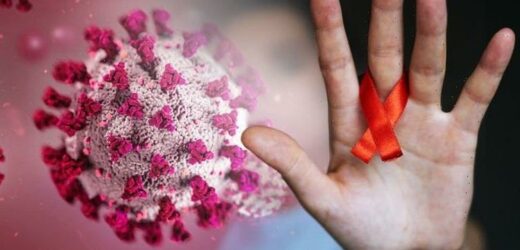Freddie Mercury was ‘hoping’ for AIDS cure says David Wigg
We use your sign-up to provide content in ways you’ve consented to and to improve our understanding of you. This may include adverts from us and 3rd parties based on our understanding. You can unsubscribe at any time. More info
The new variant – dubbed “VB” – was first found in the Netherlands as part of a study that collects samples. There have been 109 cases found across Europe and Uganda. When infected, the human immunodeficiency virus (HIV) targets and destroys immune cells called CD4 cells in the body, causing the number of these cells to plummet.
If left untreated, the virus then progresses to acquired immunodeficiency syndrome (AIDS), where the immune system progressively worsens.
It can allow life-threatening opportunistic infections and cancers to thrive.
Scientists from the University of Oxford have found that cases of the new variant appear to show that the CD4 counts drop at about twice the rate as those of people infected with closely related HIV strains.
If left untreated, researchers reported that infections with the VB variant would likely progress to AIDS, on average, within two to three years of a person’s initial HIV diagnosis.


If left untreated, researchers reported that infections with the VB variant would likely progress to AIDS, on average, within two to three years of a person’s initial HIV diagnosis.
Published in the journal Science, their study found this rate was much faster than other versions of the virus, where a similar degree of decline into AIDS occurs about six to seven years after diagnosis, on average.
Speaking to Live Science, first author Chris Wymant, said: “We found that , on average, individuals with this variant would be expected to progress from diagnosis to ‘advanced HIV’ in nine months, if they do not start treatment and if diagnosed in their thirties.”

He warned that this disease would progress even faster in an older person.
Fortunately, the researchers also found treatments like antiretroviral drugs, the standard treatment for HIV, work just as well against the VB variant as they do against other versions of the virus.
Mr Wymant said: “For an individual on successful treatment, the deterioration of the immune system towards AIDS is stopped, and transmission of their virus to other individuals is stopped.”
Katie Atkins is a chancellor’s fellow at Edinburgh Medical School and an associate professor at the London School of Hygiene and Tropical Medicine who was not involved in the study.
DON’T MISS:
Science breakthrough as satellite discovers ‘deformed’ planet [REVEAL]
Putin furious as Germany BANS Russian gas and signs deal with Ukraine [INSIGHT]
Hell for British fisherman as stocks mysteriously wiped out overnight [SPOTLIGHT]


Speaking to Live Science, she said: “The authors use the case study to underpin the importance of universal access to treatment.
“Both because we want to directly reduce the number of people dying unnecessarily of AIDS, but also as a means to reduce the amount of circulating virus and therefore reduce the chance of new, more deadly variants emerging.”
To understand why this variant spreads too quickly, the scientists looked at the variant and found that it carries many mutations, scattered throughout its genome.
While researchers aren’t sure which mutation is the cause of the new variant to be so dangerous, it is unlikely that just one mutation, or even one gene, is responsible for this change, according to Joel Wertheim, an associate professor of medicine at the University of California, San Diego, who was not involved in the study.
Source: Read Full Article


